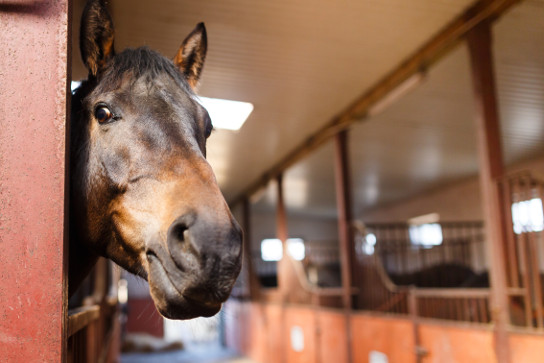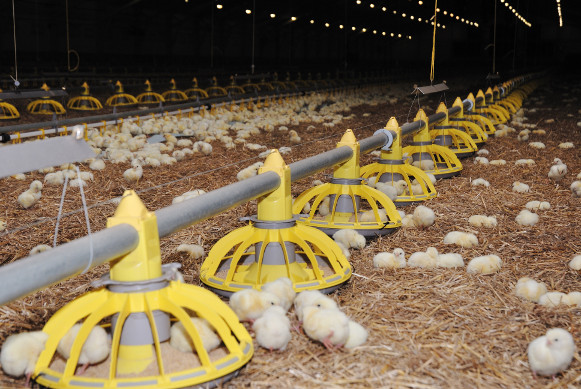Agricultural LED Lighting Systems & Services
The TBE LED Agricultural Team can meet all your lighting needs, providing bespoke lighting designs, supply and installation, meaning you receive a full service from us and can be rest assured that the welfare of your animals and your business operations will be taken fully into consideration.
Equestrian, Sports and Farming Industries are all benefitting from the use of LED lighting.
LED lighting dramatically reduces energy usage by approximately 60% and keeps the maintenance costs of keeping those lights running to a minimum.

Equestrian LED Lighting
Equestrian Lighting • Ménage Lighting • Horse Arena Lighting • Stable Lighting
LED LIGHTING is suitable for the following equestrian applications:
- Stable lighting
- Equestrian Arena lighting
- Equestrian School lighting
The lighting levels in your equestrian areas can make a positive impact on the welfare, health, behaviour and happiness of your animals.
We are regularly asked about best lighting to use in the horse sector.
Independent research shows that a light level of at least 150 to 200 lux is desirable in horse stables. This light level together with a light regime of 16 hours light followed by 8 hours of darkness provides positive results which are described below.
By extending the days with barn lighting you influence the production of Melatonin, the sleep hormone. Light inhibits the production of Melatonin and darkness accelerates it, meaning the more light there is the less sleep hormone and thus more active and healthier horses.
In addition, horses need visual contact. In dark stabling there are fewer possibilities for (visual) contact with other horses. This may result in deviant behaviour; such as weaving, cribbing and wind suction. Something that often occurs through boredom.
Stable lighting also plays an important role in breeding. Lighting has a big influence on the hormonal balance and fertility of horses. With a light regime of 16 hours of light with a light level of at least 150 to 200 lux, you extend the days: the proverbial winter dip is prevented. In addition, horses also make a less thick winter coat, which makes a considerable difference in labour and costs for eg heat blankets and shaving.
Our surveys will take all of the factors into consideration and provide the best solution for your horses home.
In horse arenas it is important to have an even light distribution. The prevention of shadow and 'light circles' in the riding hall is one of the most important factors, particularly if there are competitions being held.
In short, good barn lighting and riding hall lighting in combination with a good light level and correct lighting regime contributes to:
- more active and healthier horses
- possibilities for better visual contact
- better fertility
- less thick winter coat
- no 'light circles' in riding halls
An unsuitable light level or lighting regime can have consequences for the health, production or welfare of your animals. Always ask advice before you purchase barn lighting. In a free and no-obligation lighting plan we can show you all the advantages of a good and well-thought-out light level scheme.

LED Lighting for Poultry
Light intensity, light distribution, day length and light colour affect animal welfare and therefore animal behaviour. A correct balance of these four factors has a positive influence on the cattle. Proper and uniform barn lighting contributes to better health and productivity among other things.
Light being an important factor within the poultry sector is generally known. Nevertheless, we regularly get questions about which light regime is most suitable for healthy and productive animals.
Chickens perceive light (colours) in a different way than people. Man recognizes three colours: red, green and blue. With the chicken, the eye is one of the most developed senses, so they can perceive more colours. The chicken eye is on the side of the head. As a result, they have a wider field of view than people with their eyes on the front. In addition, the chicken can catch light outside the eye. They have a so-called eye-like organ just under the skull with which they can perceive light and dark. Chickens also have an extra peak in the ultraviolet light. Because of this extra peak they can better recognize each other. This is important for the pecking order. If chickens can not recognize each other, they start pecking at each other with the result that the pecking order is disturbed.
When lighting poultry houses, the following aspects are important:
Optimal Distribution
As mentioned earlier, chickens are sensitive to light. A good light distribution and light level is therefore of great importance. A good light distribution ensures that the chickens optimally distribute themselves over the total area of the house. This creates fewer 'wet spots' and the chance of foot pad inflammation is considerably smaller.
Good Dimmability
It is essential that the barn lighting is dimmable. Dimmable lighting gives you the opportunity to determine the desired light level in the barn.
Minimum Shadow Formation
Good light distribution means there will be as little shadow as possible. Chickens do not like to be in the dark, so it is important to have as few shadow spots in the barn as possible.Our surveys will determine which lumineres will give the correct light distribution that can be achieved with minimal numbers of fittings to keep the cost down and without creating any shadow. The ideal solution for cattle and chicken farmer.
Use of High-Frequency Lighting
With poultry, it is important to use High Frequency barn lighting. Chickens, as mentioned earlier, see the light differently from people. Stable lighting with a frequency of up to 160 Hertz means the chicken can't detect flashes of light - traditional fluorescent lighting has a frequency of 50 Hertz and can therefore create a 'disco' effect in the barn; an unpleasant experience for the chickens. In addition, the luminaires must be suitable for the stable climate.
Light Level
Different light regimes are applicable for poultry. This depends on the type of poultry that is present in the barn. In broilers, it is legally required to have a light level of at least 20 lux on 80% of the floor surface. The same applies to laying hens while parent animals need 40 to 60 lux again. Every barn is different and therefore we would like to inform you about the possibilities of barn lighting in poultry houses. An unsuitable light level or lighting regime can have consequences for the health, production or welfare of your animals.


LED Lighting for Cattle
Dairy cattle make no distinction between LED, High Pressure Sodium or Metal Halide, therefore only the intensity and duration of the light are important.
Independent research that has been conducted since 1978 shows that a light level of at least 150 lux and along with a regime of 16 hours of light of at least 150 lux followed by 8 hours of darkness (maximum 5 lux) has a positive impact on the health, fertility, welfare and productivity of dairy cattle.
By extending the days with barn lighting you can influence the production of Melatonin, the sleep hormone. Light inhibits the production of Melatonin and darkness accelerates it. In other words, longer light means less sleep hormone and more active and healthier cows. With the above-mentioned lighting regime, you simulate the long summer days: the days when the cow is naturally the most active, resulting in higher milk production and greater feed intake.
Briefly summarized, a 16-hour light regime provides a light level of 150 to 200 lux, followed by 8 hours of darkness, for the following results in dairy cows:
- Up to 15% more milk
- Improved fertility
- Better perception of heat
- Shortened calving interval
- Better observation of diseases
Young Cattle
Young cattle are the dairy cattle of the future and the right light level with the right lighting regime have the following positive effects on young cattle:
- Improved body growth
- Faster in puberty
- Higher feed intake
- Positive influence on the development of the udder
The recommended light regime for young stock is: 16 hours of light - 8 hours of darkness, light intensity: 150-200 lux.

Capital Financing Solutions
We can point you in the right direction for financing solutions to help companies avoid the initial capital expenditure. If required and subject to approval, our packages provide savings and revenue from the day the system is commissioned, with minimal installation down-time allowing you to get on with your business.
Various financing options are available - contact us to discuss your requirements.
Free Initial Consultation & Quotation
Providing FREE SITE SURVEYS and SYSTEM DESIGNS for suitable LED Lighting solutions, tailored to your particular requirements.
Where appropriate, you will receive an approximation of savings that you could expect to achieve from your installation.
